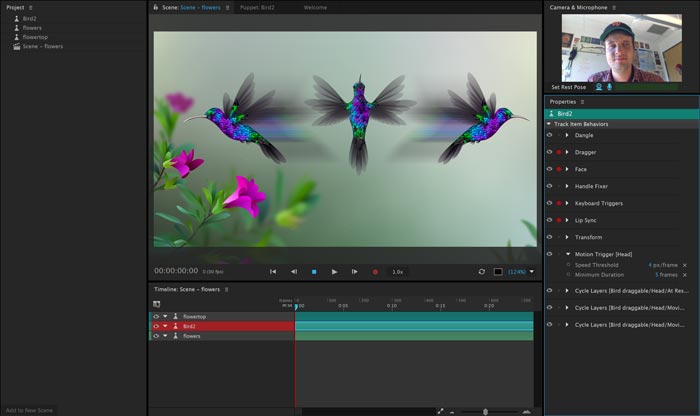

#Character animator tutorials how to
In conclusion, you should now have an understanding of how to import and add an animation to the animator controller. You can now drag your animator controller into the controller box in the Inspector Window. Go to the Scene tab and click on your character. So when you smile or nod your head, your character does, too. Tip: You can use your middle mouse button to zoom in and out. Character Animator uses your expressions and movements to animate your characters in real-time. Let's right click and create a New State, and then add a transition from Entry to New State. See the example above. This is used for multiple animations-for example, walk to run.

When you right click on a state, you can create transitions. A box will open under the Inspector Window. Here you can edit the speed and loop time if you wish your animation to loop. To edit your animation settings, double click on the State. Tip: The default animation will be in orange. A window will open with your imported animations, so click and drag one into that box. Each State (box) will represent an animation.Ĭlick on the clock to the right of Motion. You may have multiple animations, but for the purpose of this tutorial we will talk about adding one. This is where we will add our character's animation. Go to Create > Animator Controller, and name it M圜 ontroller.Īfter you add the animator controller, you will see a new tab. We can now drag your character into the game world. See the example below.Īfter your character is configured, click Done and Configure. A new window will open with your character, and this is where Unity attempts to match your character's rig (muscles and bones).Ī good rig match will show in green. To set up the rig, right click your character and choose humanoid. All of your character's elements, including materials, will be imported into the same file.

Click and drag your character's file (fbx, cd3, etc.) into the folder you created in Unity. We will also need to adjust the camera by moving the arrow for a better view. Now let's add a plane for our character to stand on. Right click on the Project Window > Create > New Folder. For the purpose of this tutorial, let's name it character. Your character may have many different components, and that's why it's important to create a new folder. Tip: Unity understands the T-Pose, so before importing your character, aim to save him in a default T-pose. Let's open Unity by starting a new project. Since this tutorial is about importing an animated character, we won't get into the specifics about Unity.
#Character animator tutorials free
Separately, you can use the free preset animations from Unity or purchase animation packages from the Unity Asset Store. They provide basic free animations and custom bone rigging that can animate your character in minutes. Once you sign up, you can choose different characters and animation kits. Mixamo is a great option (recently purchased by Adobe). If you've created your character or would like to purchase a stock character, let's talk about where we can find some. If you have created your own animations, that's awesome-we will discuss importing them into Unity shortly. In this tutorial, I hope to make it simple, so that you may bring your carefully sculpted character to life! Finding Free Animations c3d), Studio Max (.max), and Blender (fbx.).Īt first, importing a character into Unity can seem intimidating. Along with an easy-to-use interface, it allows you to import files from most major designing programs, such as Maya (.mb or. This makes it a little easier than working off memory or your own experiences.Unity 3D is one of the most popular open-source game engines available today. A lot of the reference will show you a simplyfied setup. Poses, animations or colours are covered in heaps of tutorials.

It’s always helpful to check out references. I test a character’s setup with a simple idle animation. Think simple and create something you can use in your game. There is nothing wrong with the ‘mad-kung-fu-360-tiger-meets-dragon-in-mid-air-move’ but it might be a little frustrating to start with. If you start out animating it’s helpful to go with some more basic animations first. Idealy, keeping layers and pages separated. The program even alows you export all the pages in one layered bitmap file. Flick through them to check your progress with easy. Instead of layering animations you just place them on separate pages. As result, I appreciate the multiple page setup of CorelDraw documents.


 0 kommentar(er)
0 kommentar(er)
